 W
WErnesto "Che" Guevara was an Argentine Marxist revolutionary, physician, author, guerrilla leader, diplomat, and military theorist. A major figure of the Cuban Revolution, his stylized visage has become a ubiquitous countercultural symbol of rebellion and global insignia in popular culture.
 W
WThe 26th of July Movement was a Cuban vanguard revolutionary organization and later a political party led by Fidel Castro. The movement's name commemorates its 26th July 1953 attack on the army barracks on Santiago de Cuba in an attempt to start the overthrowing of the dictator Fulgencio Batista.
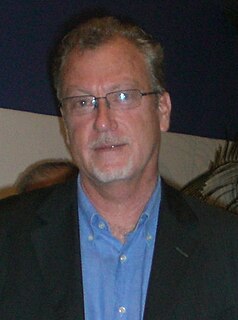 W
WJon Lee Anderson is an American biographer, author, investigative reporter, war correspondent and staff writer for The New Yorker, reporting from war zones such as Afghanistan, Iraq, Uganda, Palestine, El Salvador, Ireland, Lebanon, Iran, and throughout the Middle East as well as during Hurricane Katrina rescue efforts with K38 Water Safety as documented in the New Yorker article Leaving Desire. Anderson has also written for The New York Times, Harper's, Life, and The Nation. Anderson has profiled political leaders such as Hugo Chávez, Fidel Castro, Che Guevara, and Augusto Pinochet.
 W
WRené Barrientos Ortuño was a Bolivian military officer and politician who served as his country's vice president in 1964 and as its president from 1966 to 1969.
 W
WThe Battle of Las Mercedes was the last battle which occurred during the course of Operation Verano, the summer offensive of 1958 launched by the Batista Government during the Cuban Revolution.
 W
WThe Battle of Santa Clara was a series of events in late December 1958 that led to the capture of the Cuban city of Santa Clara by revolutionaries under the command of Che Guevara. The battle was a decisive victory for the rebels fighting against the regime of General Fulgencio Batista: within 12 hours of the city's capture, Batista fled Cuba and Fidel Castro's forces claimed overall victory. It features prominently on the back of the three convertible peso bill.
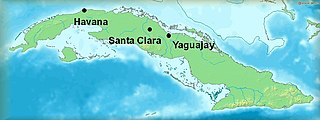 W
WThe Battle of Yaguajay [(ɟ)ʝaɣwaˈxaj] was a decisive victory for the Cuban Revolutionaries over the soldiers of the Batista government near the city of Santa Clara in Cuba during the Cuban Revolution.
 W
WOrlando Borrego is a Cuban economist, writer and former guerrilla who worked with Che Guevara during the Cuban Revolution.
 W
WHaydée Tamara Bunke Bider, better known as Tania or Tania the Guerrilla, was an Argentine-born East German communist revolutionary and spy who played a prominent role in the Cuban government after the Cuban Revolution and in various Latin American revolutionary movements. She fought alongside Marxist guerrillas under Che Guevara during the Bolivian Insurgency (1966–1967) where she was killed in an ambush by CIA-assisted Bolivian Army Rangers.
 W
WRaúl Modesto Castro Ruz is a Cuban politician who is currently serving as the First Secretary of the Communist Party of Cuba, the most senior position in the communist state, succeeding his brother Fidel Castro in April 2011. He has also been a member of the Politburo of the Communist Party of Cuba, the highest decision-making body, since 1975. In February 2008, he was appointed the President of the Council of State and President of the Council of Ministers. He stepped down as president on 19 April 2018, but remained the first secretary of the Communist Party. He is still reckoned as the de facto leader of the country, retaining oversight over his successor as president, Miguel Díaz-Canel.
 W
WChe is an interjection commonly used in The Falkland Islands , Argentina, Uruguay, Rio Grande do Sul (Brazil) and Valencia (Spain), signifying "hey!", "fellow", "guy". Che is mainly used as a vocative to call someone's attention, but it is often used as filler too. The Argentine revolutionary Ernesto "Che" Guevara earned his nickname from his frequent use of the expression, which was perceived as foreign by his Cuban comrades.
 W
WThe Che Guevara trend, or "Che chic", is a fashion trend featuring the Argentinian-born revolutionary Ernesto "Che" Guevara. The phenomenon has attracted attention from the media, political commentators, songwriters, and Cuban American activists due to the popularity of the T-shirt design, Che's political beliefs, and the "irony" of buying a T-shirt depicting a Marxist icon. As op-ed commentator Chris Berg noted in The Age, "Ironically, Che Guevara's longevity as a cultural symbol has been thanks to the very economic system he sought to destroy".
 W
WThe Che Guevara Mausoleum is a memorial in Santa Clara, Cuba, located in "Plaza Che Guevara". It houses the remains of the revolutionary Ernesto "Che" Guevara and twenty-nine of his fellow combatants killed in 1967 during Guevara's attempt to spur an armed uprising in Bolivia. The full area, which contains a bronze 22-foot statue of Guevara, is referred to as the Ernesto Guevara Sculptural Complex.
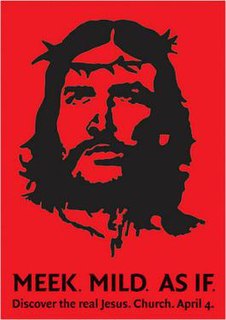 W
WChe Jesus is an image depicting Jesus Christ in the style of Jim Fitzpatrick's iconic two-tone portrait of Che Guevara.
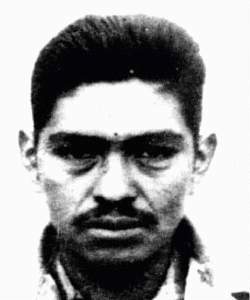 W
WSimeón Cuba Sarabia, also known as Willy, was a member of the Ñancahuazú guerrilla column led by Che Guevara in Bolivia. Born in the Cochabamba region of Bolivia, he became a leader among tin miners in Huanuni and served as the secretary of organization and secretary of militias of the local mine workers' union. He also carried out various social service activities for the benefit of the miners' families. Cuba Sarabia joined the Communist Party of Bolivia (PCB) but resigned from it in 1965 to become a member of the Bolivian Marxist–Leninist Party which favored armed struggle. When he urged that group to put its principles into practice, he was expelled from it along with Moisés Guevara. It was Moisés Guevara who brought him into Che Guevara's Ñancahuazú guerrilla group in March 1967.
 W
WJules Régis Debray is a French philosopher, journalist, former government official and academic. He is known for his theorization of mediology, a critical theory of the long-term transmission of cultural meaning in human society, and for associating with Marxist revolutionary Che Guevara in Bolivia in 1967 and advancing Salvador Allende's presidency in Chile in the early 1970s. He returned to France in 1973 and later held various official posts in the French government.
 W
WJim Fitzpatrick is an Irish artist. He is best known for elaborately detailed work inspired by the Irish Celtic artistic tradition. However, his most famous single piece is rather different in style, his iconic two-tone portrait of Che Guevara created in 1968, based on a photo by Alberto Korda.
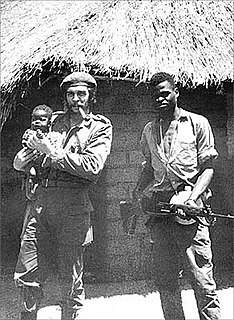 W
WThe foco theory of revolution by way of guerrilla warfare, also known as foquismo, was formulated by French intellectual and government official Régis Debray, whose main source of inspiration was Marxist revolutionary Che Guevara's experiences surrounding his rebel army's victory in the 1959 Cuban Revolution.
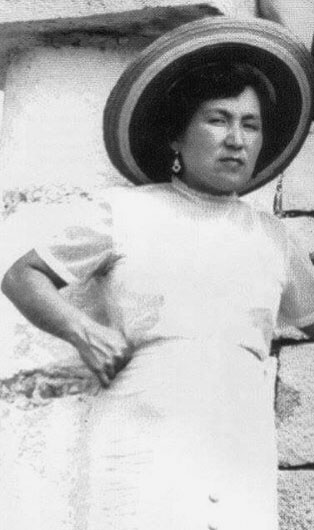 W
WHilda Gadea Acosta was a Peruvian economist, Communist leader, and author. She was Che Guevara's first wife.
 W
WAlberto Granado Jiménez was an Argentine–Cuban biochemist, doctor, writer, and scientist. He was also the youthful friend and traveling companion of Che Guevara during their 1952 motorcycle tour in Latin America. Granado later founded the University of Santiago de Cuba School of Medicine. He authored the memoir Traveling with Che Guevara: The Making of a Revolutionary, which served as a reference for the 2004 film The Motorcycle Diaries, in which he was played by Rodrigo de la Serna. An elderly Alberto Granado makes a short appearance at the end of the film.
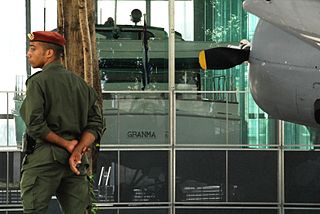 W
WGranma is the yacht that was used to transport 82 fighters of the Cuban Revolution from Mexico to Cuba in November 1956 for the purpose of overthrowing the regime of Fulgencio Batista. The 60-foot diesel-powered cabin cruiser was built in 1943 by Wheeler Shipbuilding of Brooklyn NY as a light armored target practice boat, US Navy C-1994 and modified postwar to accommodate 12 people. "Granma", in English, is an affectionate term for a grandmother; the yacht is said to have been named for the previous owner's grandmother.
 W
WGuerrillero Heroico is an iconic photograph of Marxist revolutionary Che Guevara taken by Alberto Korda. It was captured on March 5, 1960, in Havana, Cuba, at a memorial service for victims of the La Coubre explosion. By the end of the 1960s, the image, in conjunction with Guevara's subsequent actions and eventual execution, helped solidify the leader as a cultural icon. Korda has said that at the moment he shot the picture, he was drawn to Guevara's facial expression, which showed "absolute implacability" as well as anger and pain. Years later, Korda would say that the photograph showed Che's firm and stoic character. Guevara was 31 years old at the time the photograph was taken.
 W
WAleida Guevara March is the eldest daughter of four children born to Ernesto "Che" Guevara and his second wife, Aleida March.
 W
WGuevarism is a theory of communist revolution and a military strategy of guerrilla warfare associated with communist revolutionary Ernesto "Che" Guevara, a leading figure of the Cuban Revolution who believed in the idea of Marxism–Leninism and embraced its principles.
 W
WLaurent-Désiré Kabila, or simply Laurent Kabila, was a Congolese revolutionary and politician who served as the third President of the Democratic Republic of the Congo from May 17, 1997, when he overthrew Mobutu Sese Seko, until his assassination on January 16, 2001. He was succeeded eight days later by his 29-year-old son Joseph.
 W
WAlberto Díaz Gutiérrez, better known as Alberto Korda or simply Korda, was a Cuban photographer, remembered for his famous image Guerrillero Heroico of Argentine Marxist revolutionary Che Guevara.
 W
WLa Higuera is a small village in Bolivia located in the Province of Vallegrande, in the Department of Santa Cruz. It is situated in the La Higuera Canton belonging to the Pucará Municipality.
 W
WThe legacy of Argentine Marxist revolutionary Che Guevara is constantly evolving in the collective imagination. As a symbol of counterculture worldwide, Guevara is one of the most recognizable and influential revolutionary figures of the twentieth century. However, during his life, and even more since his death, Che has elicited controversy and wildly divergent opinions on his personal character and actions. He has been both revered and reviled, being characterized as everything from a heroic defender of the poor, to a cold-hearted executioner.
 W
WAleida March Torres is a Cuban revolutionary who was Ernesto "Che" Guevara's second wife, and a member of Fidel Castro's Cuban army.
 W
WThe Ñancahuazú Guerrilla or Ejército de Liberación Nacional de Bolivia was a group of mainly Bolivian and Cuban guerrillas led by the guerrilla leader Che Guevara which was active in the Cordillera Province of Bolivia from 1966 to 1967. The group established its base camp on a farm across the Ñancahuazú river, a seasonal tributary of the Rio Grande, 250 kilometers southwest of the city of Santa Cruz de la Sierra. The guerrilla was intended to work as a foco, a point of armed resistance to be used as a first step to overthrow the Bolivian government and create a socialist state. The guerrillas defeated several Bolivian patrols before they were beaten and Guevara was captured and executed. Only five guerrillas managed to survive and flee to Chile.
 W
WCarlos Manuel Puebla was a Cuban singer, guitarist, and composer. He was a member of the old trova movement who specialized in boleros and nationalistic songs.
 W
WFélix Ismael Rodríguez Mendigutia is a Cuban American former Central Intelligence Agency Paramilitary Operations Officer in the Special Activities Division, known for his involvement in the Bay of Pigs Invasion and the execution of communist revolutionary Che Guevara as well as his ties to George H. W. Bush during the Iran–Contra affair.
 W
WSecond National Front of Escambray was an independent guerilla group led by Eloy Gutiérrez Menoyo and Dr. Armando Fleites and included Roger Redondo, Ramiro Lorenzo, Jorge Castellón, Jesús Carreras Saya, Lázaro Artola, Genaro Arroyo, and others in the Cuban central Escambray Mountains. William Alexander Morgan was also a part of the Escambray group. While initially the group supported Fidel Castro in his efforts to overthrow Cuban dictator Fulgencio Batista, after Castro took power some of its members joined former Batista soldiers and local farmers in the Escambray Rebellion (1959-1965) opposing Castro.
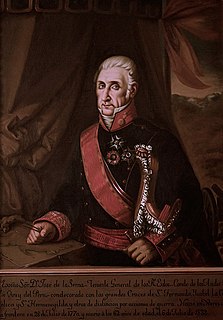 W
WJosé de la Serna e Hinojosa, 1st Count of the Andes was a Spanish general and colonial official. He was the last Spanish viceroy of Peru to exercise effective power.
 W
WPaco Ignacio Taibo II, also known as Paco Taibo II or informally as PIT is a Spanish-Mexican writer, novelist and political activist based in Mexico City. He is most widely known as the founder of the neopolicial genre of novel in Latin America and is also a prominent member of the international crime writing community. His Spanish language work has won numerous awards including two Latin American Dashiell Hammett Prizes. In 2018, Taibo was appointed as head of the Fondo de Cultura Económica by President Andrés Manuel López Obrador.
 W
WThe Tren Blindado is a national monument, memorial park, and museum of the Cuban Revolution, located in the city of Santa Clara, Cuba. It was created in memory of the events of 29 December 1958, during the Battle of Santa Clara, by the Cuban sculptor José Delarra.
 W
WVallegrande is a small colonial town in Bolivia, located in the Department of Santa Cruz, some 125 km (bee-line) southwest of Santa Cruz de la Sierra. It is the capital of the Vallegrande Province and Vallegrande Municipality and serves as a regionally important market town. The small town is best known for being the first burial site of revolutionary Che Guevara, after his 1967 execution.
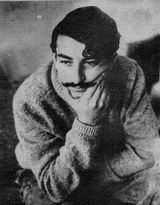 W
WJorge Vázquez Viaña was a Bolivian revolutionary. He was part of the intellectual revolutionary guerrilla group of Che Guevara.
 W
WHarry "Pombo" Villegas was a Cuban Communist guerrilla. He was born in Yara, Cuba, and was a descendant of African slaves. He fought alongside Che Guevara in battles from the Sierra Maestra to the Bolivian insurgency. From 1977 to 1979, and again from 1981 to 1988, Villegas was part of the leadership of Cuba's volunteer military mission in Angola, fighting alongside Angolan and Namibian forces against aggression by South Africa's apartheid regime. Villegas was a Central Committee member of the Communist Party of Cuba from 1997 to 2011, a deputy of Cuba's National Assembly, and executive vice president of the Association of Combatants of the Cuban Revolution.
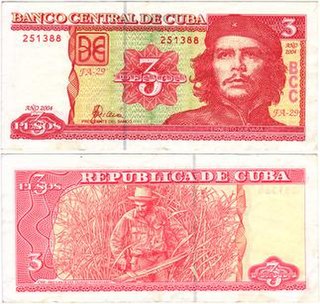 W
W